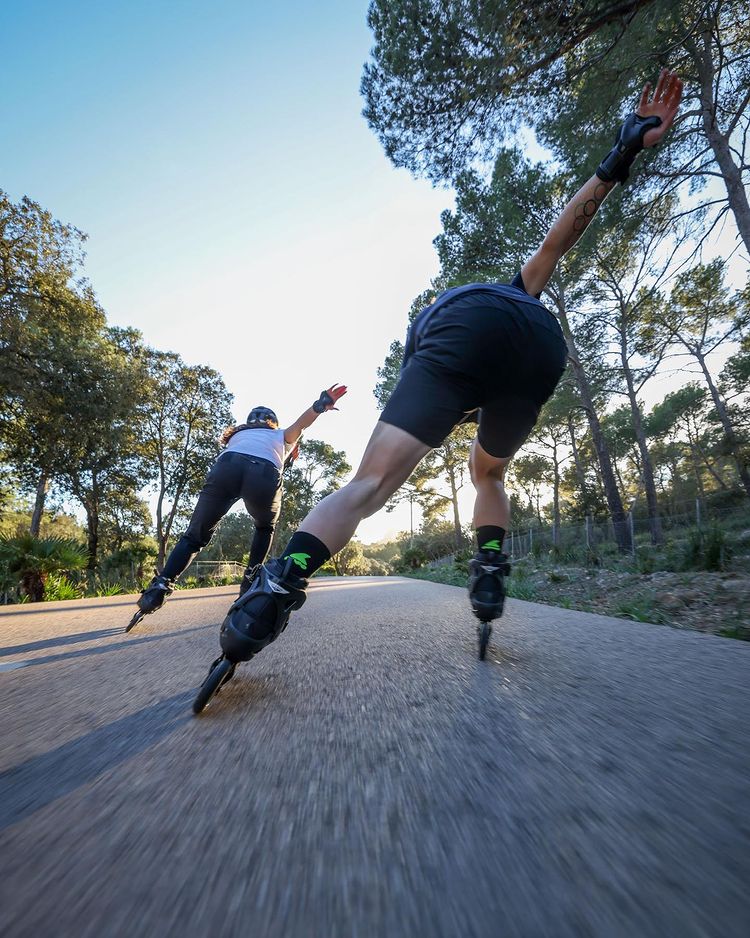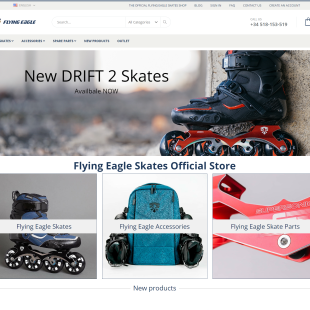Inline skating, also known as rollerblading, is a popular outdoor activity that combines the benefits of cardio exercise with the fun of gliding on wheels. In recent years, it has gained recognition as a low-impact exercise option that can provide many of the same benefits as running, without the same level of stress on the joints.
If you’re trying to decide between running and inline skating for your next workout, consider the following advantages of inline skating as a low-impact exercise.
Benefit 1: Reduced Risk of Impact Injuries
One of the main advantages of inline skating is that it puts less stress on the joints than running. When you run, your feet pound the ground with each step, which can lead to impact injuries such as shin splints, stress fractures, and runner’s knee. Inline skating, on the other hand, allows you to glide over the ground with much less impact. This can make it a safer and more comfortable option for people who are prone to impact injuries or have existing joint problems.
Benefit 2: Improved Balance and Coordination

Inline skating requires good balance and coordination, as you have to maintain your balance on a narrow strip of wheels while pushing off with each stride. This can help to improve your overall balance and coordination, which can have carryover effects to other activities and sports. In addition, the act of balancing on inline skates can also engage and strengthen your core muscles, which can improve your overall stability and posture.
Benefit 3: Lowered Risk of Overuse Injuries
Running can also lead to overuse injuries, such as tendonitis and plantar fasciitis, which are caused by repetitive stress on the same muscles and tissues. Inline skating, on the other hand, allows you to use a wider range of muscles, as you push off with your quadriceps, hamstrings, and glutes, rather than just your feet and lower legs. This can help to reduce the risk of overuse injuries and keep you from getting burned out on your workouts.
Benefit 4: Greater Variety of Workouts
Inline skating provides a greater variety of workouts than running, as you can switch between different terrain types, speeds, and intensity levels. For example, you can skate on flat surfaces for a steady, endurance-based workout, or you can skate up and down hills for a more interval-based workout. You can also skate on rough or uneven terrain for a more challenging balance and coordination workout. This variety can help to keep your workouts interesting and prevent boredom.
Benefit 5: Improved Cardiovascular Fitness
Inline skating is an excellent way to improve your cardiovascular fitness, as it requires a constant, steady effort to keep your legs moving. Depending on your intensity level, inline skating can burn anywhere from 300 to 600 calories per hour, which is similar to running. In addition, inline skating can also help to improve your leg strength and endurance, as you push off with your legs on each stride.
Benefit 6: Fun and Social

Inline skating is also a fun and social activity that can be enjoyed with friends or as a solo activity. You can skate at your own pace and enjoy the scenery, or you can skate with a group and challenge each other to races or interval workouts. Inline skating can also be a great way to explore new areas and discover new trails, paths, and parks.
Benefit 7: Convenience and Affordability
Inline skating is also a convenient and affordable form of exercise, as you can skate just about anywhere there is a smooth, flat surface. You don’t need to drive to a gym or pay for a membership, and you can skate at any time of day that is convenient for you. In addition, inline skates are relatively inexpensive compared to other types of sports equipment, and they can last for many years with proper maintenance.
Benefit 8: Improved Mental Health
Inline skating, like other forms of exercise, can also have a positive impact on your mental health. It can help to reduce stress and anxiety, improve your mood, and boost your self-esteem and confidence. The outdoor setting and social aspect of inline skating can also provide a sense of connection and community, which can be beneficial for mental health.
Benefit 9: Low Barrier to Entry
Inline skating also has a low barrier to entry, as it is relatively easy to learn and requires minimal equipment. All you need is a pair of inline skates, a helmet, and some protective gear, such as knee and elbow pads. You can start skating at your own pace and gradually build up your skills and endurance as you become more comfortable. In addition, there are many resources available, such as instructional videos, online communities, and local skating groups, to help you get started and improve your skills.
Benefit 10: Fun and Enjoyable
Finally, inline skating is just plain fun and enjoyable! It is a great way to escape the monotony of indoor workouts and get outside in the fresh air and sunshine. You can skate to your favorite music or podcasts, or just enjoy the sounds of nature as you glide along. Inline skating can also be a great way to relieve stress and clear your mind, as you focus on your technique and the present moment.
In conclusion, inline skating is a low-impact exercise that provides many of the same benefits as running, without the same level of stress on the joints. It is an excellent option for people of all ages and fitness levels, and it can help to improve your balance and coordination, cardiovascular fitness, mental health, and overall enjoyment of exercise. So grab a pair of inline skates and get ready to roll!
 Inlineonline Tu portal de patines y patinaje en línea con noticias, foro, mercadillo y comunidad online
Inlineonline Tu portal de patines y patinaje en línea con noticias, foro, mercadillo y comunidad online





